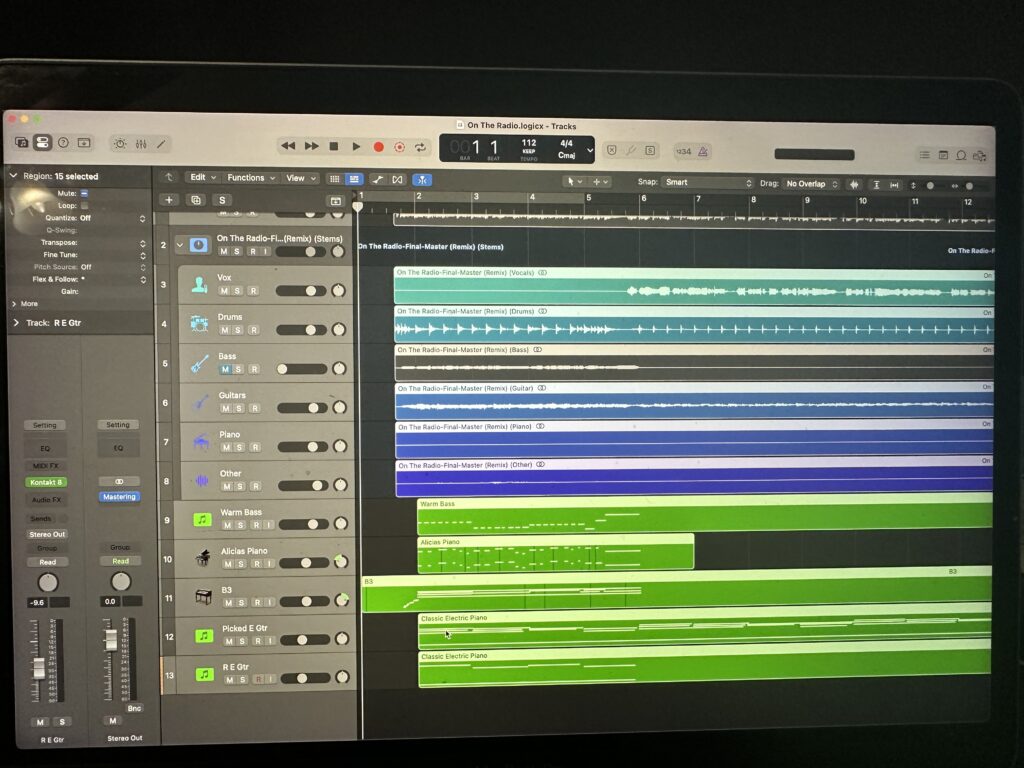Case Study: Turning a “Good Enough” Demo into a Pitch-Ready Song
Songwriters often reach out to me for help with their music—whether that’s shaping the story arc, refining lyrics, polishing home-recorded tracks, or transforming a rough demo into a professional, radio-ready production. I love every part of the creative process.
In this case study, a songwriter contacted me through my Nashville Song Pitcher website. He believed he had written a country song that was “pitch ready.” He submitted his lyrics and a home-recorded demo for my evaluation.
Even before playing his demo, I noticed issues in the lyrics. The storyline was solid, but the word choices lacked strong imagery—imagery that could draw listeners in and stir emotion. When I listened to the demo, it was clear the concept had potential, but the execution wasn’t at an industry level.
When I suggested revising and polishing the song, he was hesitant. After all, his friends and family loved it, and he thought what he had was “good enough.” To ease his concern, I offered to create a new version on spec. If he liked it, we’d discuss a nominal fee. He agreed—and the real work began.
Here is a recording of the demo he sent to me to evaluate. You can hear how the songwriter had an interesting story to tell, but the quality just wasnt there.
Step 1: Revising the Lyrics with AI Collaboration
I started with the lyrics. Using Perplexity AI, my go-to songwriting assistant, I ran the lyrics through to explore ways to strengthen imagery, emotion, and flow. Like any collaborator, AI provided useful ideas, but the key is using your own knowledge and filter to decide what works.
I always remind writers: AI is a tool, not a creator. Think of it like a plumber’s wrench—you still need craft, judgment, and direction to use the tool effectively. Too many new songwriters rely on AI apps to magically produce hit songs, which often leads to shallow results.
After combining AI suggestions with my own experience, I drafted stronger lyrics. To test the quality, I ran them through another helpful AI resource, Song Critic. It gave clear, song-specific feedback. I revised, filtered its notes, and re-drafted until the lyrics felt sharp, emotional, and “singable.”
Step 2: Developing the Music with Suno AI
With solid lyrics in place, I moved to the music. I used Suno, an AI music app, prompting it to deliver a modern country-rock style with a powerful male vocal, strong drums, and layered guitars.
I generated about 50 different versions—good, bad, and everything in between. Like any producer, I trusted my ear and selected the take that best matched the melody and energy I envisioned.
Step 3: Music Production in Logic Pro
AI provided a strong foundation, but production is where “good” becomes “great.” I downloaded Suno’s stereo mix and imported it into Logic Pro, where I “split the stems” (separating vocals, drums, guitars, bass, etc.).
Individually, AI stems rarely sound impressive—but combined, they work surprisingly well. Still, I always customize:
- Bass: I always replace the bass with my own performance, using Native Instruments Prime Bass. This adds clarity and punch to the low end.
- Vocals: Suno vocals often lack dynamic range and brightness. I enhanced them with EQ, reverb, delay, and compression, shaping them into a polished, industry-ready sound.
- Instrumentation: To add richness, I layered my own piano, organ, strings, and pads. I also upgraded the guitars with Native Instruments acoustic and electric guitar sounds, which—when played correctly—are nearly indistinguishable from the real thing.
The result? A fuller, cleaner, more professional arrangement.
Step 4: Mixing & Final Polish
Once all the tracks were in place, I moved into mixing—balancing each instrument, riding vocal levels, and automating dynamics throughout the song. This is where everything locks together and the track gains the energy, depth, and polish that makes it competitive in the marketplace.
The Release & Client Reaction
When I shared the finished track with the songwriter, he was thrilled by how far his original idea had come. What he once thought was “good enough” had been elevated into a song that not only sounded professional but also had real commercial potential.
The track is already getting spins on radio shows and will soon be officially released on my independent label, Broken Records. Unlike traditional labels that sign artists, my label focuses on releasing songs—a fresh approach I believe represents the next wave in the music industry.
Closing Thoughts
And that’s my process—from rough demo to pitch-worthy, radio-ready track.
I’d love to hear your thoughts on this case study and the song itself—leave me a comment to let me know what you think!
If you’re a songwriter who’d like help taking your music to the next level, contact me here. I’m not the cheapest option, but I firmly believe in value—and your music deserves the best.
Thanks for reading and listening!
Keith Mohr (mohr.keith@gmail.com)
One response to “Case Study”
-
Excellent description on how to use, manipulate and embrace today’s advancing technology. Rarely is there is a recording that is straight up ready to go for the airways.
You use AI to provide a strong foundation for production. To get ideas, suggested melodies, instrumentation and vocalization. However, it still takes people like you that has musical talent, an ear to discern and have human interaction to take a song that is “good” and it becomes “great.”

Leave a Reply